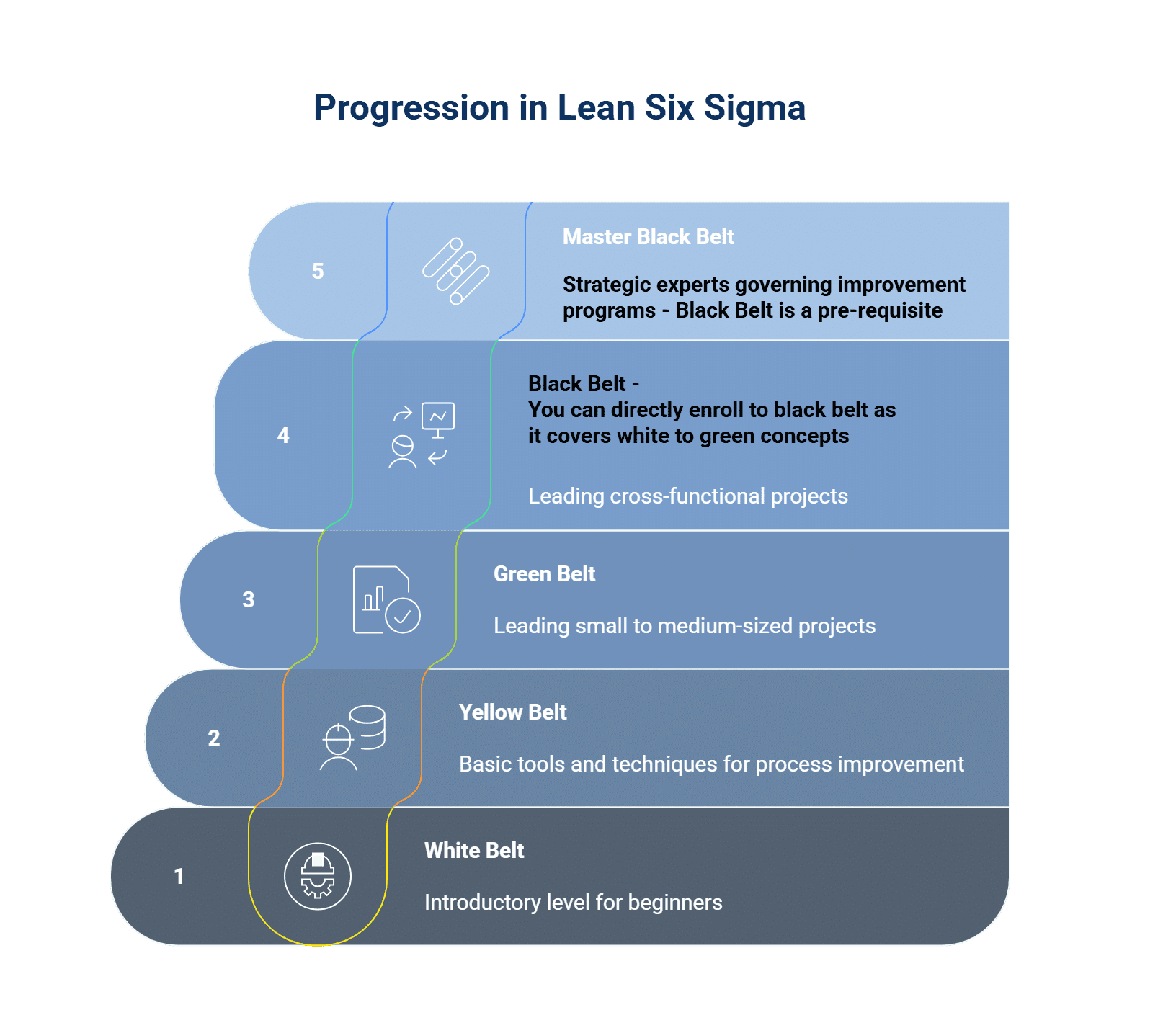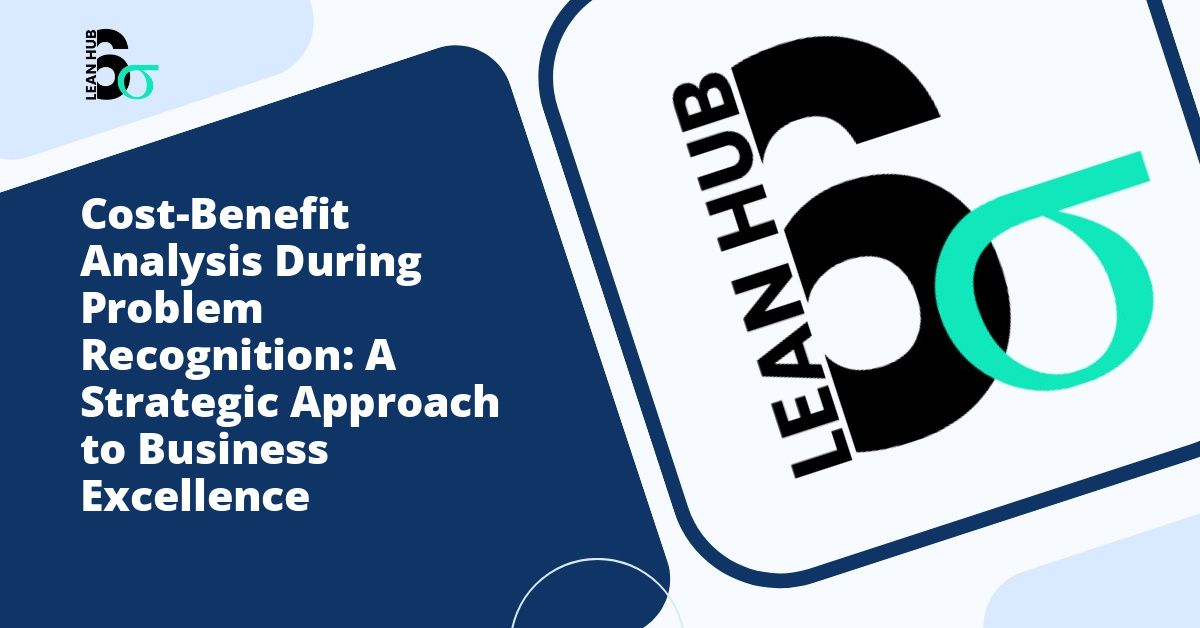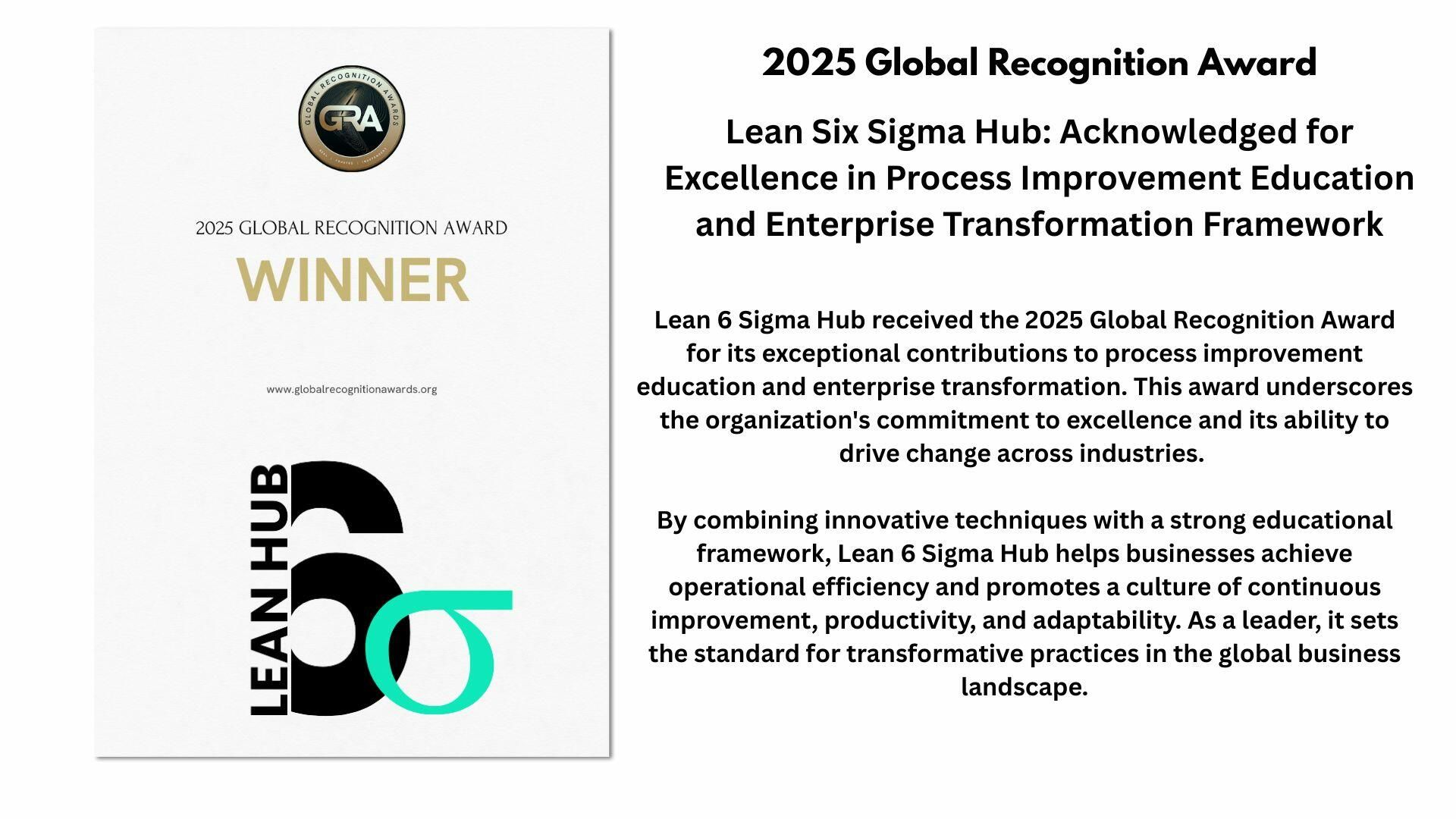Lean Six Sigma Online Training
Master Lean Six Sigma with Award-Winning Online Training

2025 Global Recognition Award Winner
Lean 6 Sigma Hub has been awarded a 2025 Global Recognition Award for its outstanding contribution to Lean Six Sigma training, enterprise transformation, and educational innovation. This global honor affirms our mission to make continuous improvement practical, scalable, and impactful for professionals and organizations worldwide..
Council for six simga accredited
Lean six sigma Online training offerings
01
Lean Six Sigma White belt
kickstart your journey with foundational principles of process improvement with lean six sigma white belt training
02
LEAN SIX SIGMA YELLOW BELT
Master essential tools and techniques for improving processes and managing small projects.
03
LEAN SIX SIGMA GREEN BELT
Develop intermediate skills in data-driven decision-making and project management
04
lean six sigma black belt
Lead complex projects and drive organizational change with advanced strategies
05
lean six sigma master black belt
Learn to mentor Green/Black Belts, drive enterprise capability, and build governance frameworks. Includes real-life case studies, coaching blueprints, and enterprise dashboards.
Process Improvement

White Belt
Introductory level that builds awareness of Lean Six Sigma principles, waste types, and the DMAIC framework. Ideal for beginners and front-line staff.
Yellow Belt
Covers basic tools and techniques used in process improvement. Yellow Belts support project teams with data collection and problem-solving.
Green Belt
Focused on leading small to medium-sized projects. Green Belts apply DMAIC, use statistical tools, and drive improvements within their function.
Black Belt
Advanced level for professionals who lead cross-functional projects. Black Belts use complex analytics, mentor Green Belts, and drive enterprise-level change.
Master Black Belt
Strategic experts who train and coach Belts, govern improvement programs, and align Lean Six Sigma with business goals at the enterprise level.
Our Unique Approach – Get Trained with Hypothetical Project
Practical Application
Trainees’ post-training assessment scores increase by 20% on average, indicating improved understanding of Lean Six Sigma concepts.
Hands-On Experience
85% of trainees report higher confidence in using Lean Six Sigma tools and techniques after completing the case study project.
Data-Driven Decision Making
90% of trainees demonstrate accurate data analysis and interpretation skills in project evaluations, showcasing their ability to make data-driven decisions.
Cross-Functional Learning
Trainees score an average of 25% higher in understanding cross-functional business impacts, as measured by a comprehensive final exam covering multiple business functions.
Team Collaboration
80% of trainees exhibit improved teamwork and communication skills, as evidenced by peer evaluations and team project outcomes.
Performance Metrics
Trainees successfully establish and track at least three key performance indicators (KPIs) per project, with 75% of projects showing measurable improvements in these KPIs by the end of the training program.

Hypothetical project
Utilising hypothetical project with dummy data helps trainees understand the concept and apply practically on the project immediately
Utilising hypothetical project with dummy data helps trainees understand the concept and apply practically on the project immediately
WHAT IS LEAN SIX SIGMA? – Eliminate Waste. Reduce Variation. Drive Results.
Lean Six Sigma is a globally recognized methodology that combines Lean’s speed and simplicity with Six Sigma’s precision and data-driven power. It empowers professionals and teams to solve business problems systematically—saving time, money, and customer frustration.
Improves Business Efficiency
Identify and eliminate non-value-added activities across any process.
Reduces Errors and Variations in Process
Apply DMAIC and statistical tools to deliver consistent, high-quality outcomes.
Boosts Career Growth
Certified professionals are in demand across industries—from healthcare to IT.
Builds a Problem-Solving Culture
Develop a structured, scalable improvement mindset within your organization

Award Winning
2025 Global Recognition Award Winner

Global Accreditation
Accredited by the Council for Six Sigma Certification

Online Training
100% self-paced online learning options

1000+ Trained
1,000+ professionals certified globally
Why Choose Lean six sigma online training from Lean 6 Sigma Hub?
Because You Deserve Lean Six Sigma Training That’s Globally Recognized, Flexible, and Results-Focused
Lean 6 Sigma Hub isn’t just another online certification provider—we’re a globally trusted platform delivering award-winning Lean Six Sigma training that’s built around practical application, not theory. Every belt level is designed to simulate real-world business challenges so you can confidently solve problems in your workplace.

The Enterprise Challenge
Modern organizations are under constant pressure to improve, but most lack the tools, structure, and mindset to solve problems sustainably. Here’s what stands in their way:
01. Inefficiency and Waste
Most business processes are filled with delays, rework, and handoffs that add no value. Without Lean thinking, these wastes go unnoticed and unaddressed.
02. Inconsistent Problem Solving
Teams often rely on intuition or firefighting instead of structured methods. This leads to short-term fixes that don’t solve root causes or scale across departments.
03. Lack of Continuous Improvement Culture
Without a shared methodology like Lean Six Sigma, improvement efforts fade quickly. Organizations need a system to build habits, accountability, and sustained change.
LEARN BY DOING – FROM WHITE BELT TO BLACK BELT
Practical Lean Six Sigma Approach
Master every Lean Six Sigma belt level with real-world scenarios, downloadable templates, and guided exercises designed for professionals. Whether you’re just starting out or aiming for strategic leadership, our practical framework ensures you’re not just learning—you’re applying.
Real-World Case Studies
Every course is built around a hypothetical project that mirrors actual workplace problems—like delays, defects, or process inefficiencie
Downloadable DMAIC Templates
Apply Lean Six Sigma tools directly through guided templates for SIPOC, 5 Whys, Control Charts, Fishbone, FMEA, and more.
Interactive Exercises
Work on activities during training—no passive learning. Every concept is applied immediately in context.
Built-In Mini Projects
Get comfortable with project execution through structured practice scenarios aligned with each belt level.
What Our Learners Say
News & Resources

Cost-Benefit Analysis During Problem Recognition: A Strategic Approach to Business Excellence
Cost-benefit analysis during problem recognition helps organizations make informed decisions about which challenges to address and which opportunities to pursue. By integrating lean six sigma principles with systematic evaluation of costs and benefits during the recognize phase, businesses can optimize resource allocation and focus on high-impact initiatives that deliver measurable results.

Cost-Benefit Analysis During Problem Recognition: A Strategic Approach to Business Excellence
In today's competitive business environment, organizations must make informed decisions about...


